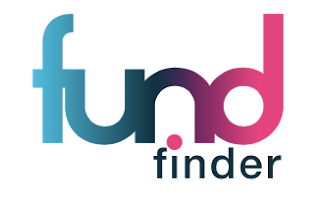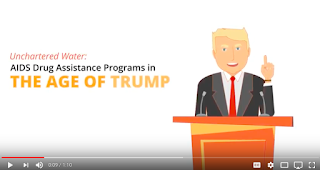By: Lisa Johnson-Lett, Treatment Adherence Specialist & Peer Educator, AIDS Alabama
Finding voice in a world paralyzed yet infiltrated by noise of polluted air there is nothing sound or authentic! When talking about advocacy we are constantly developing voice to rid pollutants speaking to communities in First People Language; redeveloping valued principles like, Denver (The Denver Principles), while speaking truths and giving power to words.
All my life I’ve been trying to find my voice. Afraid of mankind, having lost trust because of mistrust in people. Diagnosed in 1995 while enlisted in the U.S. Army (
fighting for county), I did not fight for myself. I was twenty years old, and I felt my life was in ruins.
My childhood sweetheart who I trusted assisted in my sero-conversion. I am not angry, never was (
it’s not my personality) but I experienced much sadness that turned into depression because people were not using first people language. I developed internal and external stigma. I became my own worst enemy, yet I had to figure out relationships and where I stood as a person now living with HIV. I feel my traumatic experiences in life developed a pathway for the HIV diagnosis.
There are a lot of talk about communities that are targeted and high risks. Born into a world of substance use, both parents affiliated with Heroine and LSD, I became another statistic. African American, infant, female rushed to Mary Immaculate Catholic Hospital in Queens, New York fighting for life. Child in critical condition due to stab wounds in forehead, right side of face, left breast. And cuts on the inside of the uterus. My mother the one who birthed me by nature tried to kill me because the disease of addiction took her mind. I was crying too much (
I was hungry). She thought I was Satin, and she tried to kill me. She wanted me to shut up and stop crying. At the age of 14 months I was trying to find voice.
Through my tears and crying aloud, I still serve my HIV community and try and find voice! One of the most pivotal moments in my HIV journey was the “Church”. Over 20 years, I have been living with HIV and I had attended a church about 17 years into my diagnosis. At that time I was heavily into church and religion and undergoing the Christian values. Very attentive and consistent I vowed to pay my tithes and sit under leadership, yet no one in the congregation knew my diagnostic status. I pondered. I mediated. I remember the scripture, “If there is anyone sick among you bring them to the elders.”
I had been sick for a long time: living in denial, not wanting to take medicine (
hoping God would somehow heal me, like he healed the woman with the issue of Blood). I am the woman and the issue of my blood is HIV! I couldn’t stand it any longer. I had attended 3 years of this church! The pastor is my elder and he needs to know!
I questioned myself; how can I sit under his leadership, listening Sunday after Sunday about the Word of God and he doesn’t know my status. I am trusting in Man to deliver sermon over my life and I can’t trust him with the secret of my diagnosis? I got up early one morning and drove 45 minutes to Pastor's house. It was about 8 a.m. when I arrived, and I told Pastor and First Lady (his wife) simultaneously. They immediately embraced me. At that time, I was the Church Secretary and the weekly announcer where I acknowledge birthdays and upcoming events from the pulpit using the microphone (
discovering voice). The very next Sunday, different color pieces of masking tape were placed on each Mic. When I came in the doors of the church. I was immediately told by a brother that I will always speak from the mic with the green masking tape. I remained in the setting until 2014 and never looked back.
Today I don’t have to worry about the green masking tape or the mic. It was the worst of times that has molded me to my happy place of today. When things are not going right, I get tired quick. I don’t have time for mess and ignorance. I aim to educate and promote growth through empowerment of change. Advocacy transcends the world. Advocacy is needed at all levels. It took a long time for me to understand that I had a voice to the development of voice and here I am today shaping voice to help someone along the way. To create a hub of understanding that we are not alone and voices carry the message. Advocates give the whispers a voice!
Now, I am the voice. I am the voice to Survivors. I sit at tables because I don’t want to be on the menu. I want to be a part of the decision making process. I have a vested interest in GIPA - the
Greater involvement of People Living with HIV. I am a firm believer of the art of reciprocation. I give, yet I receive basking in the glory of happiness and watch people prosper and have growth spurts. It’s a good feeling to have a mentor and be available to mentor someone else. This is paying it forward through advocacy.
Working for the agency, AIDS Alabama, has given me the strength to push pass my pain and provide a glimmer of hope. Kathie Heirs, CEO of AIDS Alabama, once said, "We had a life before HIV." Now, I've reclaimed my life serving as the Treatment Adherence/Peer Support Specialist and providing psychosocial supportive services, conducting HIV testing, partnering with prevention services, and my all time favorite, advocating for others. I represent community and engage with peers as a mentor to show them that we are family and we have voice.
The ADAP Advocacy Association's national advocacy has warranted me the greatest opportunities of networking and building advocacy. Where I used to be a recipient of the AIDS Drug Assistance Program, now I can assist others to receive. I am elated to sit on their board of Directors because their CEO saw potential in me to transcend voice!
Disclaimer: Guest blogs do not necessarily reflect the views of the ADAP Advocacy Association, but rather they provide a neutral platform whereby the author serves to promote open, honest discussion about public health-related issues and updates.






